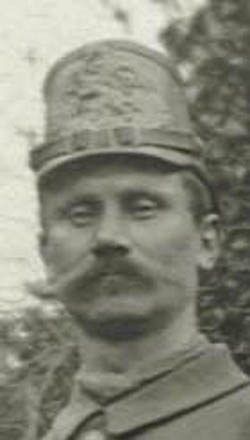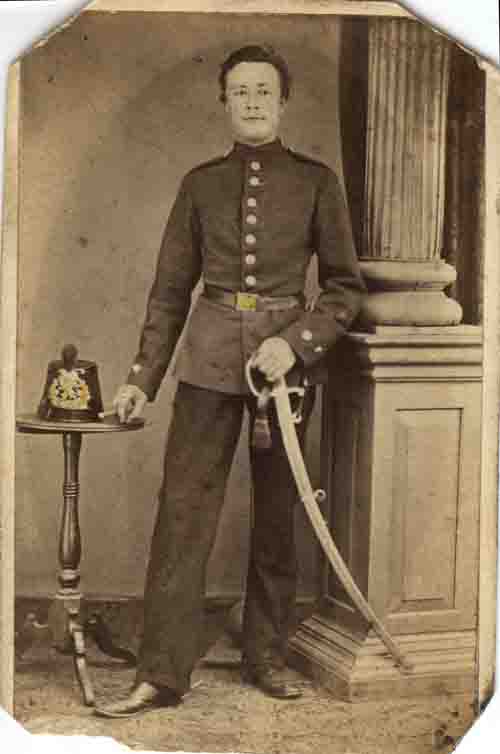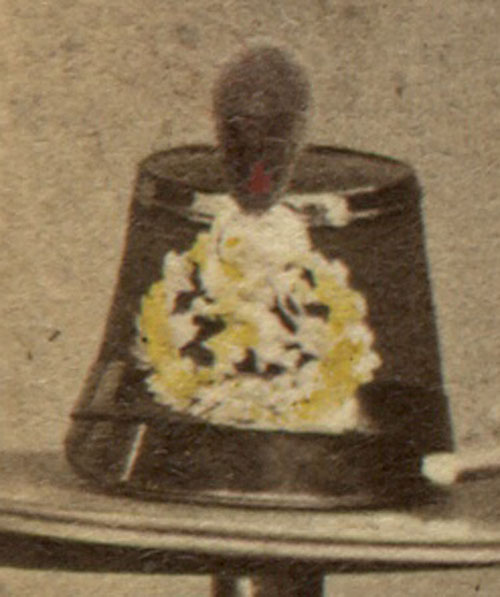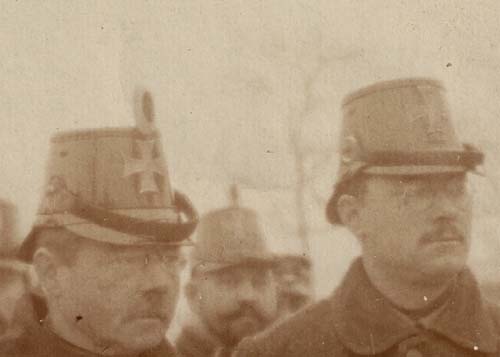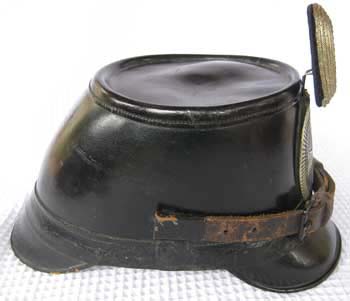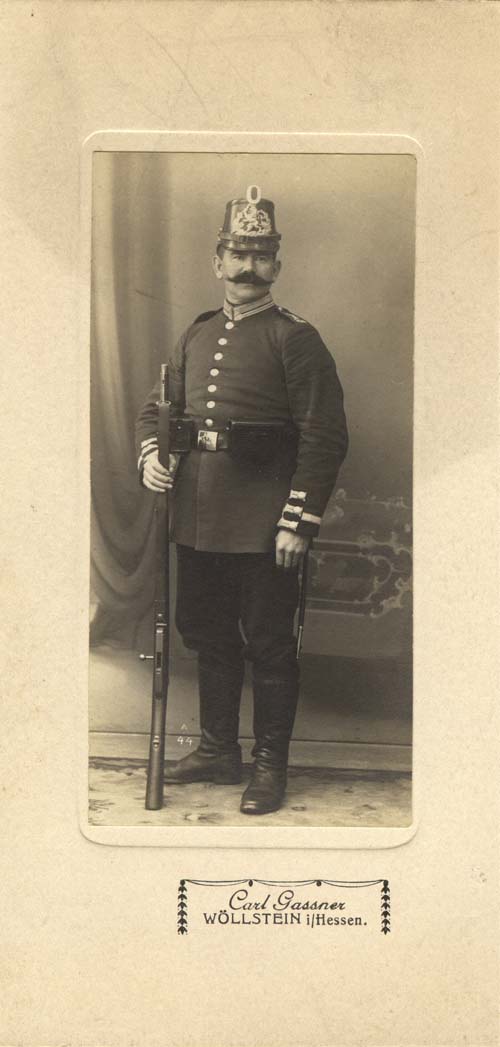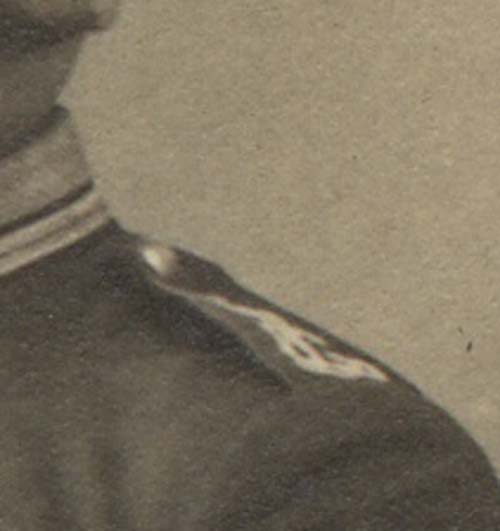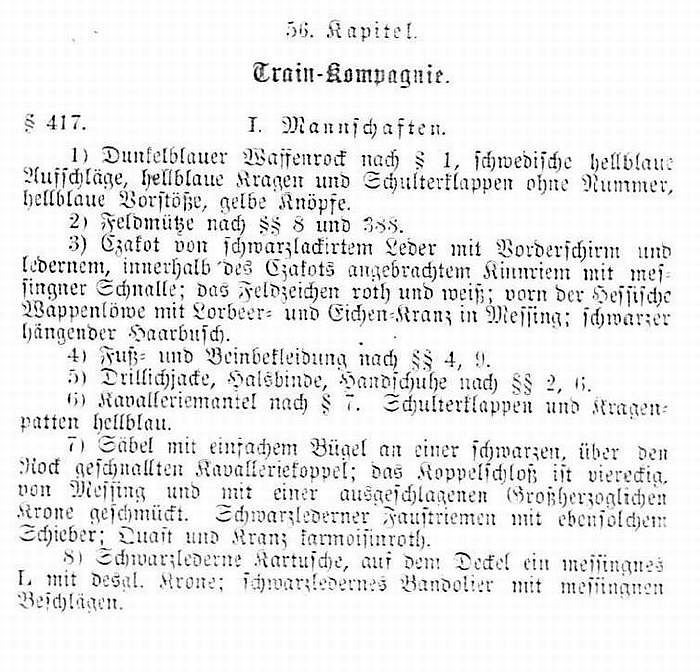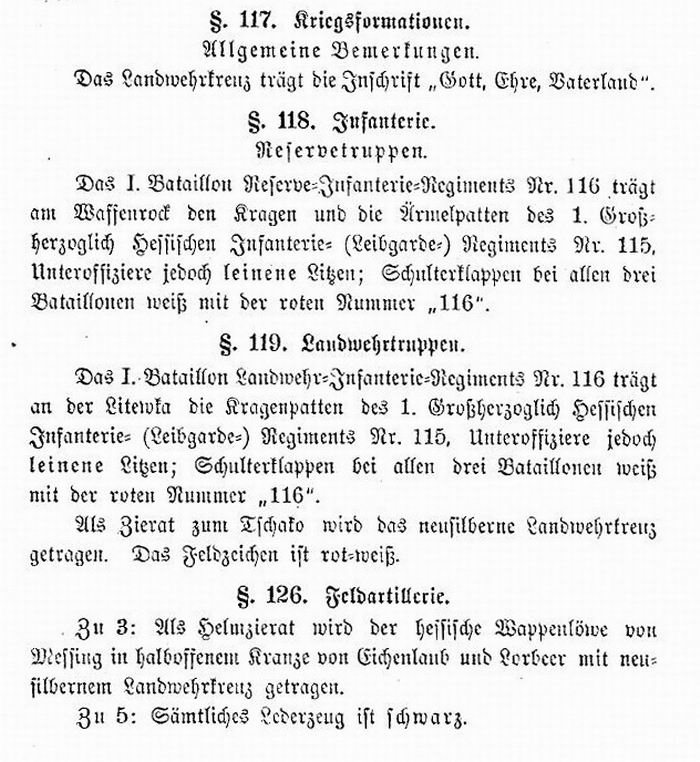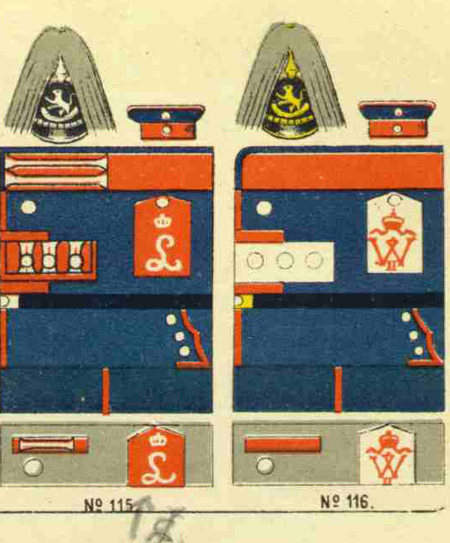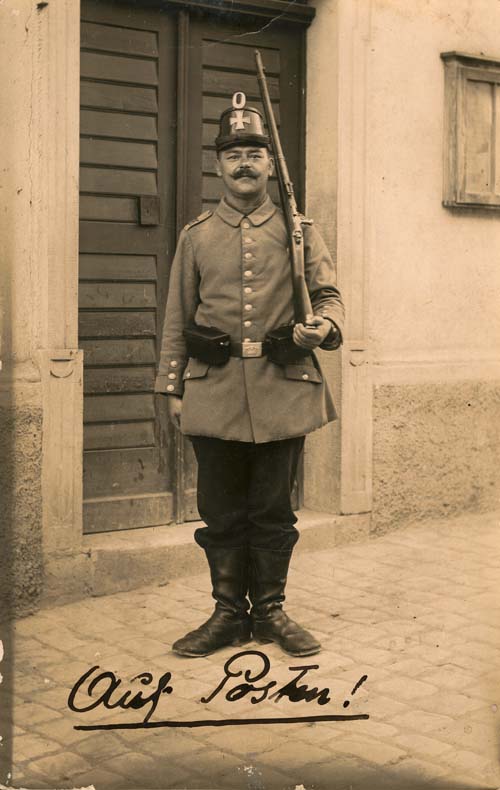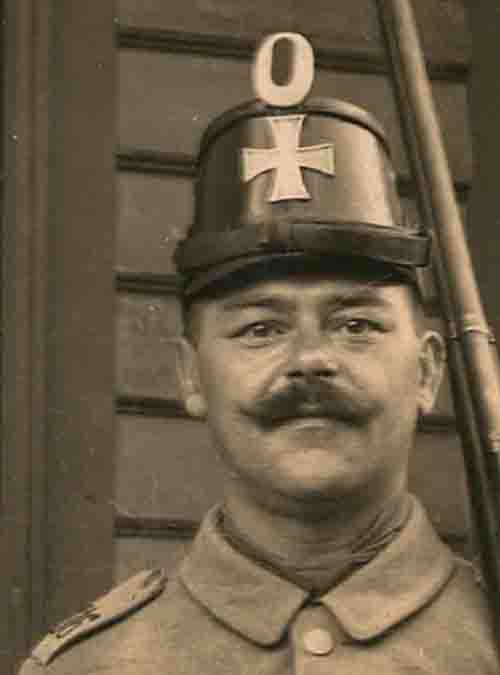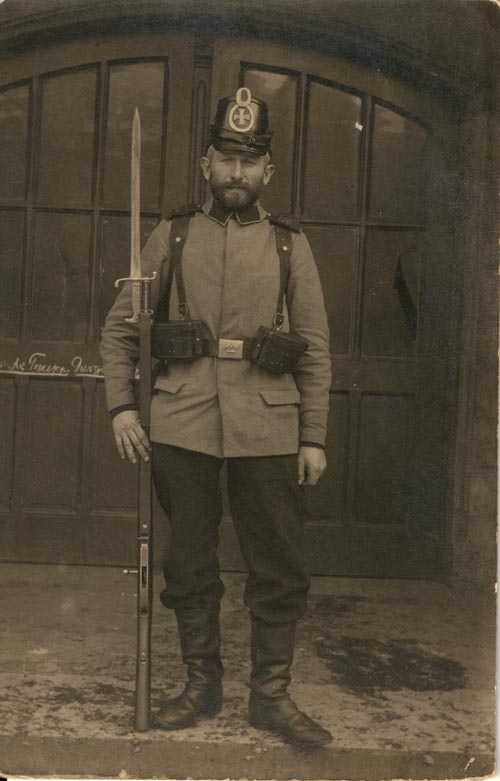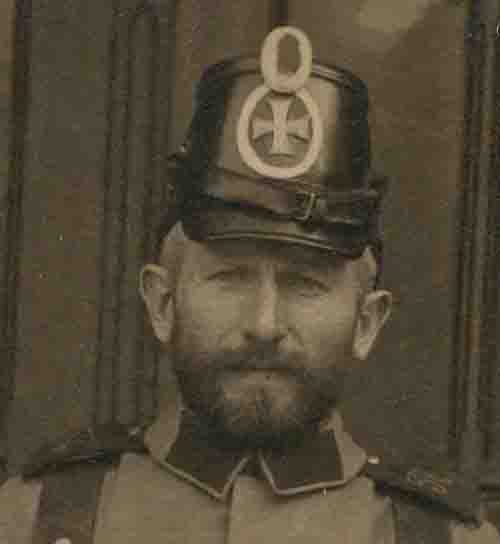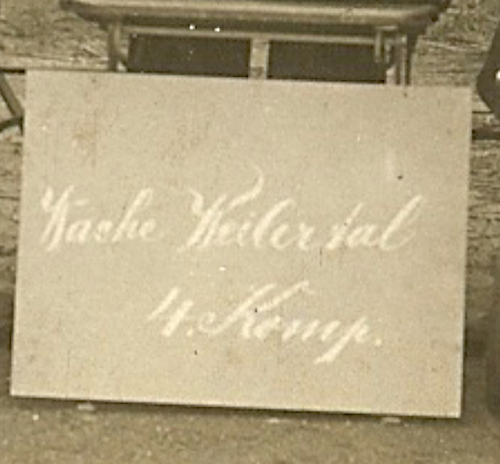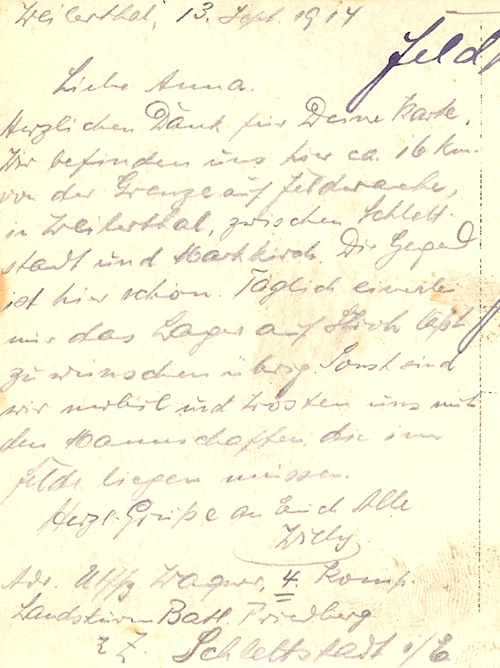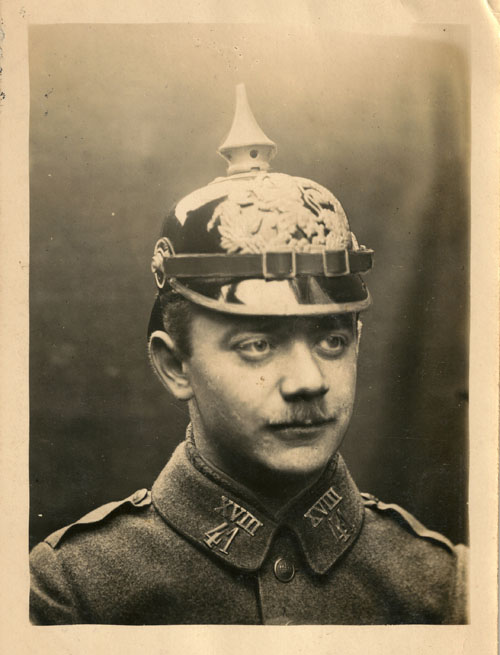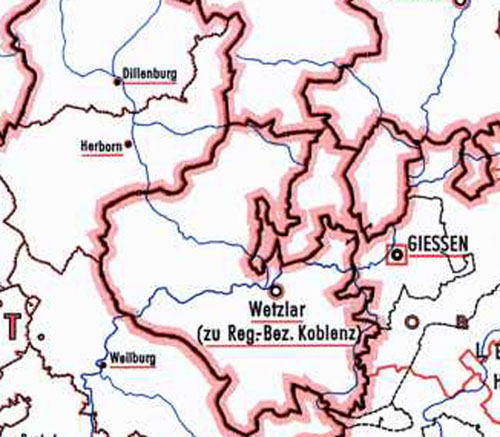Hessian Shako
Joeseph P. Robinson
| There are no answers that I know of in this monologue. So if you have an opinion or any other information please share it. This is just confusing and I thought I would share some of my confusion and try to explain it. Quick conventional wisdom says that really there were no Hessian shakos during the war and that anyone encountered is Landsturm may be Landwehr but any shako quickly went away. |
|
|
| This is the oldest picture I have of a Hessian shako.The general consensus was that this was for the train organization. If indeed this is from the German Austrian wartime around 1866 it is not clear to me what size organization that was. I have the official history of the war written by the great general staff and diagrams of the order of battle. However, it seems to be entirely silent on this point. Larcade in volume 2 indicates that a company sized organization was originally founded in 1869. This picture has a Hessian Wappen on the shako. Even though there is a lack of pictures there seems to be a significant difference between infantry models which have some sort of cross, and train models which have the Hessian Wappen. |
| The standard Hessian Infantry shako (in the photo)is quite a bit different than the standard 1860 mode (below) l. The back visor seems to be exaggerated. An air vent looks to be present. Also, the Landwehr cross looks to be much larger than the standard 50 mm. According to at least one source this is an 1856 model but it has squared edges on the front visor.. (Jaeger and Schutzen, Kinna and Moss, Bellona Publications, Argus Books,Watford Hers., 1977.pg.4) In the reference the German Infantry by Herr and Nguyen, volume 2 p. 746, there is a picture of an 1854 model but it also has squared edges on the front visor. |
|
|
| Larcade explained that the Hesse Kassel Jaeger Battalion became Jaeger Battalion 11 so that is no big confusion. However, he goes on to state on page 129 that there were two Jaeger battalions that wore shako from Hesse Darmstadt. These were supposed to wear a model 1860 with a scaled down or reduced version of the Prussian Wappen. It is not clear to me what exactly that is. In volume 2 he says that Landwehr and Landsturm are dressed as infantry. These guys did not wear a pickelhaube so I am not sure what he meant. |
| Prussian Landwehr were authorized helmets in 1899. In October 1899 through an AKO the Landwehr was allowed to wear helmets. However, they were instructed to maintain the shakos. Larcade Volume 2 which is about mounted troops talks about the infantry of Hesse wearing a pickelhaube starting in 1903. My poor French language skills seem to indicate that the shako went away for the train units also in 1903. |
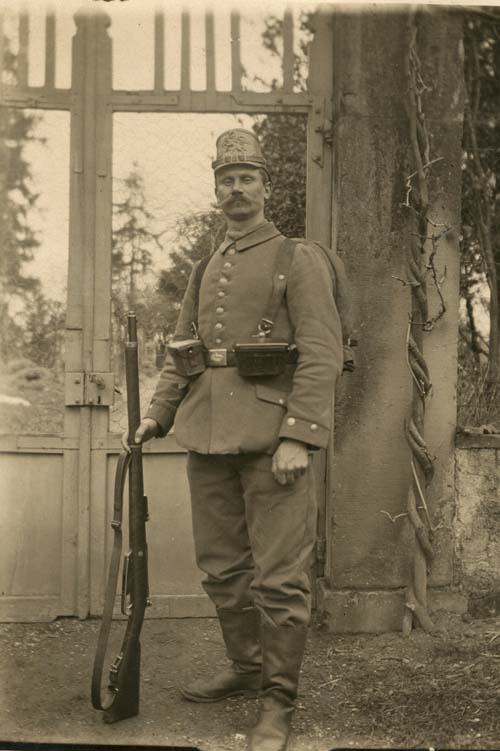 |
| When mobilization began in 1914 the shakos that had been stored in 1899 were pulled out of the closet. There was a significant expansion of all elements under arms including reserves, Landwehr, Landsturm and train units. Some soldiers in 1914 received the shako. The question becomes, to what end? Is there a way to recognize the function of the soldier wearing a shako from the picture alone? It seems as though Hessen followed a different drummer than other units in the Prussian army. |
| This individual like the picture above, is also wearing a shako with a Hessian Wappen. Are these two individuals in a train unit? Why is he wearing a JR115 uniform? Is this an M1860 type shako? |
|
|
| This from Louis Mila’s “Uniformirungs-Liste” of 1881. Provided by Glenn Jewison.
|
| Here is another picture of an individual wearing a Hessian Infantry shako however, wearing the uniform of the active unit JR 115. You can see the bottom of the cipher on his shoulder strap. If this individual was in the Landsturm there would be nothing on the shoulder strap. There is a notation on page 525 (volume 1 of Kraus) about I/LJR 116 wearing the uniform of JR 115. |
| This from the Dress Regulations of 1905 provided by Glenn Jewison.
|
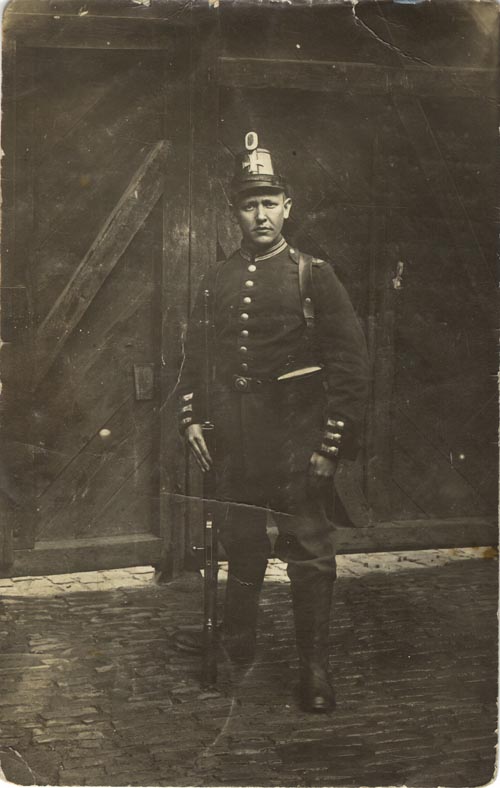 |
| Here is another picture with a standard Hessian shako that is clearly in the Landsturm based on the brigade designation. The brigade had 2 Bezirkscommandos, Gießen and Friedberg both in Hesse Darmstadt. |
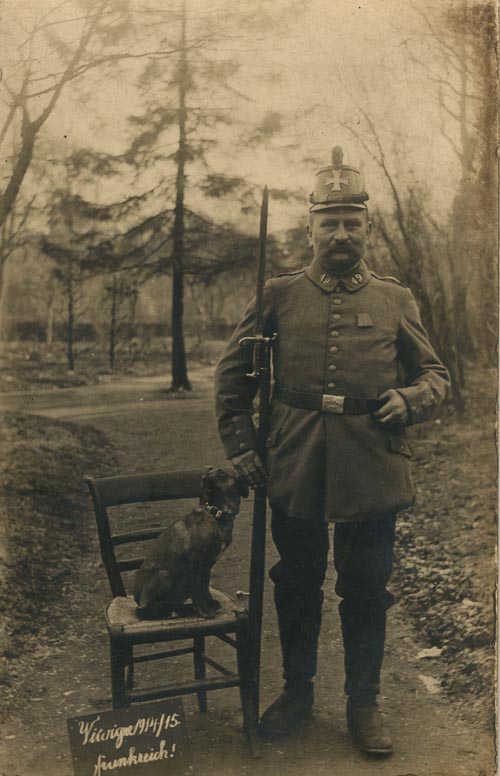 |
| Here is another picture with a standard Hessian shako and the number 116 on a shoulder straps. Is he from the Landwehr? The reserve infantry Regiment? Both regiments are from the Hesse Darmstadt area. |
|
|
| Here is another picture of RJR 116 wearing the uniform of JR 115. Notice the mix of Hessian and Prussian Wappen. |
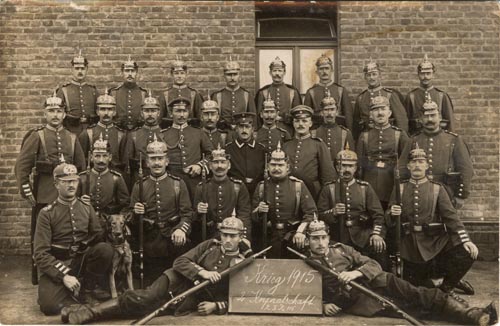 |
| Here is another picture of an individual with what seems to be a model 1860 Prussian type shako. He clearly has the number 57 on his shoulder boards. This guy can only be from the reserve infantry Regiment as a Landwehr Regiment of that number did not exist at the time the card was written. Clearly Hessian belt buckle.
Reserve-Infanterie-Regiment Nr. 57 (+MG.-Kp.) (Only two battalions) Is this near Hessen? No. |
|
|
| This from the Trawnik collection. Shows Landsturm, Litzen and Hessian wappen! Not train. |
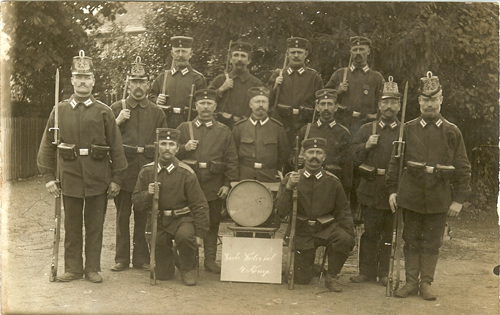 |
|
|
| Not a shako. However, this is a fantastic example. The unit is clearly identified from the collar insignia. Ldst.-I.-Ers.-Btl. Dillenburg (XVIII. 41). So we know exactly the city where the soldiers served and he has a Hessian pickelhaube. The problem is the city is not in Hesse. It is not in what is considered Ober Hesse. It is in fact located in the old Duchy of Nassau. You can see by the map below that Hesse is on the far right. There is a Prussian enclave around the city of Wetzlar and Dillenburg is far to the west. Why is he wearing this helmet??
|
| So what does this all mean? It seems obvious that in the case of Hesse shako were used for other purposes besides Landwehr and the Landsturm. There seems to be some sort of confusion about brigade boundaries and the boundaries of the political entity of Hesse Darmstadt. Some of these reserve units and brigades seem to be outside of what one would consider Hessen Darmstadt. Therefore, it seems as though people thought of themselves as Hessian even though they were no longer citizens of that state. There was doubtless Hessian wappen/buckles used outside of the state. There are lots of questions and no clear answers. |

